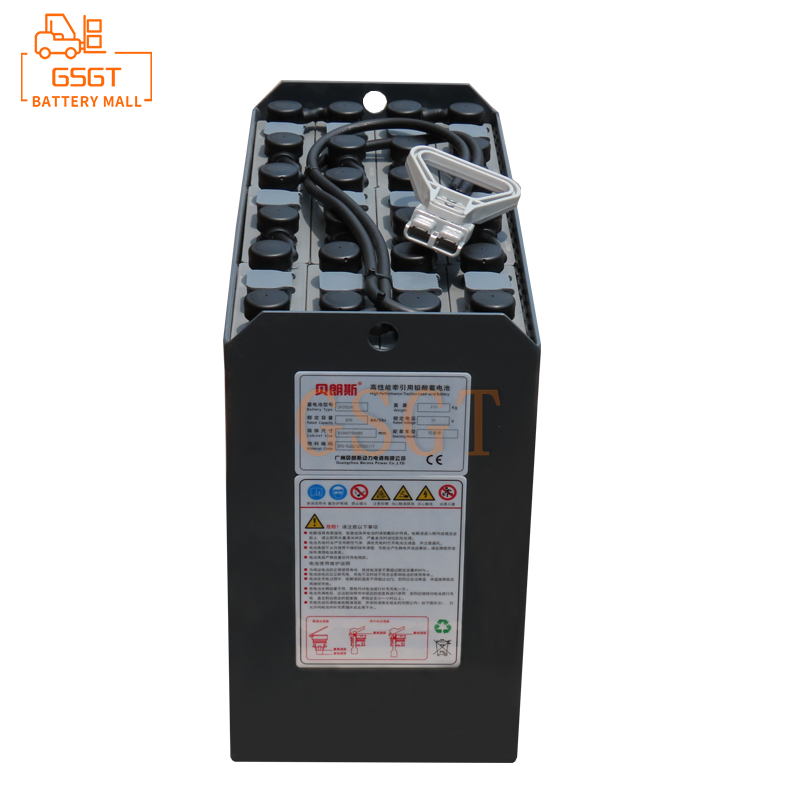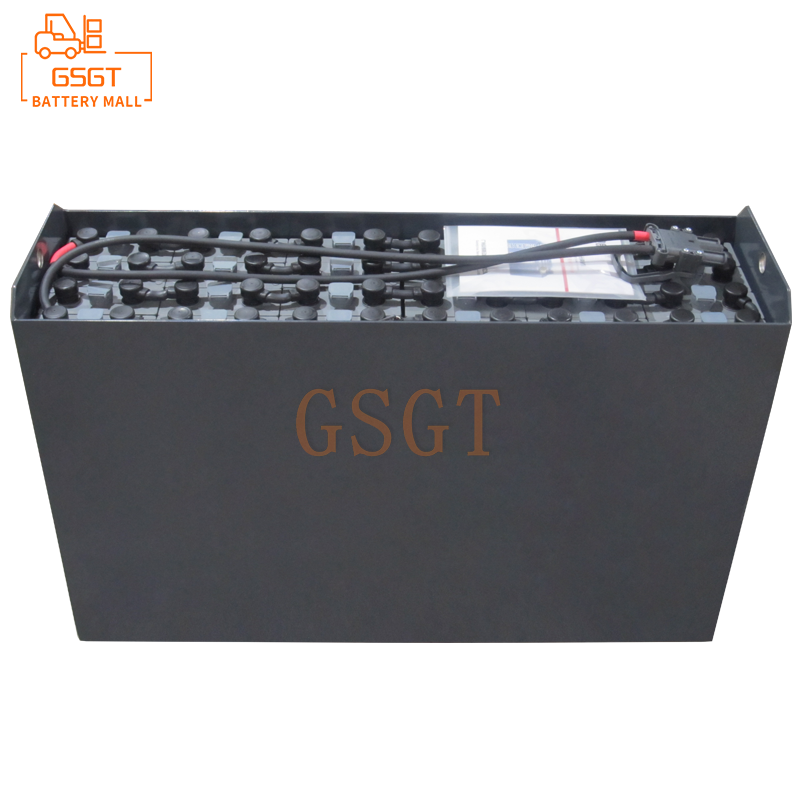Time:2025-07-16 15:46:51
Browse:619
In the field of industrial logistics, forklifts, as crucial handling equipment, the stability of their power sources is of vital importance, and forklift lead-acid batteries are one of the core power sources. To understand the working principle and performance of lead-acid batteries for forklifts, it is necessary to be clear about the functions and characteristics of the key internal components. The following will provide a detailed introduction to the key components inside the lead-acid battery of forklifts.
Plate
The plates are the core components of forklift lead-acid batteries, divided into positive plates and negative plates. Their main function is to carry out electrochemical reactions and achieve the mutual conversion of electrical energy and chemical energy.
The positive plate usually uses lead dioxide as the active material and is coated on the grid frame made of lead-antimony alloy or lead-calcium alloy. The function of the grid frame is to support the active material and conduct the current. When the positive plate is charging, lead dioxide will react with the electrolyte. When discharging, electrical energy is released.
The negative plate, with spongy lead as the active material, is also coated on the grid frame. Compared with the positive plate, the number of negative plates is usually one more than that of the positive plate. This enables the positive plate to be better surrounded by the negative plate, thereby enhancing the efficiency of electrochemical reactions.
Partition
The separator is located between the positive and negative plates in a storage battery. Its main function is to prevent direct contact between the positive and negative plates, which could cause a short circuit. At the same time, it allows ions in the electrolyte to pass through, ensuring the normal progress of electrochemical reactions.
The material of the partition is usually microporous rubber, plastic or glass fiber, etc. These materials have excellent insulation and permeability properties, which can isolate the plates while allowing the electrolyte to flow smoothly. In addition, the separator also has a certain resistance to acid corrosion to adapt to the environment of the electrolyte.
Electrolyte
Electrolyte is an indispensable part of forklift lead-acid batteries. It is made by mixing pure sulfuric acid and distilled water in a certain proportion. The electrolyte in a storage battery serves to conduct ions and acts as the medium for electrochemical reactions.
The concentration of the electrolyte has a significant impact on the performance of the storage battery. Generally speaking, the relative density of the electrolyte is 1.28g/cm³ (at 25℃). Excessively high concentration will accelerate the corrosion of the plates. If the concentration is too low, it will reduce the capacity and discharge performance of the battery.
Shell
The shell is a container used to hold the plate group, electrolyte and other components, serving to protect the internal components and prevent electrolyte leakage. The casing of forklift lead-acid batteries is usually made of acid-resistant, high-temperature resistant and high-strength plastics, such as polypropylene.
The interior of the shell is divided into multiple single compartments, each of which contains a set of plates (including positive plates, negative plates and partitions). The individual cells are connected through busbars to form the total voltage of the entire battery. The top of the shell is usually provided with a liquid filling hole for convenient addition of electrolyte or distilled water.
Busbar
The busbar is a conductive component that connects each single-cell plate group. Its function is to collect the current generated by each single cell and output it to the outside of the battery. Busbars are usually made of lead or lead alloys and have good electrical conductivity.
The welding quality of the busbar has a significant impact on the performance of the battery. If the welding is not firm, it will lead to an increase in contact resistance, affecting the output of current, and may even cause the battery to overheat and get damaged.
Related questions and answers
Question: Does the number of plates affect the capacity of a storage battery?
Yes, within a certain range, the more plates there are, the greater the capacity of the battery will be. More plates mean a larger reaction area, which can participate in more electrochemical reactions and thus store more electrical energy. However, the number of plates is not necessarily the more the better. Factors such as the volume and weight of the battery also need to be taken into consideration.
Question: What impact does the liquid level height of the electrolyte have on the operation of the battery?
Answer: The liquid level of the electrolyte must be maintained within an appropriate range (generally 10-15mm higher than the upper edge of the plates). If the liquid level is too low, the plates will be exposed to the air and are prone to oxidation, causing the active material on the plates to fall off and reducing the capacity and service life of the battery. If the liquid level is too high, during the charging and discharging process of the battery, the electrolyte will expand and overflow, corroding the battery casing and surrounding components. At the same time, it will also lead to a decrease in the concentration of the electrolyte, affecting the performance of the battery.
In conclusion, each key component inside the lead-acid battery of a forklift plays an important role. They work together to ensure the normal operation of the battery. Understanding the features and functions of these components helps us better maintain and service the lead-acid batteries of forklifts, extend their service life and improve the working efficiency of forklifts.

$800

$850

$880

$3400

MESSAGE
Professional And Efficient
Security
Affordable Price
Professional Services